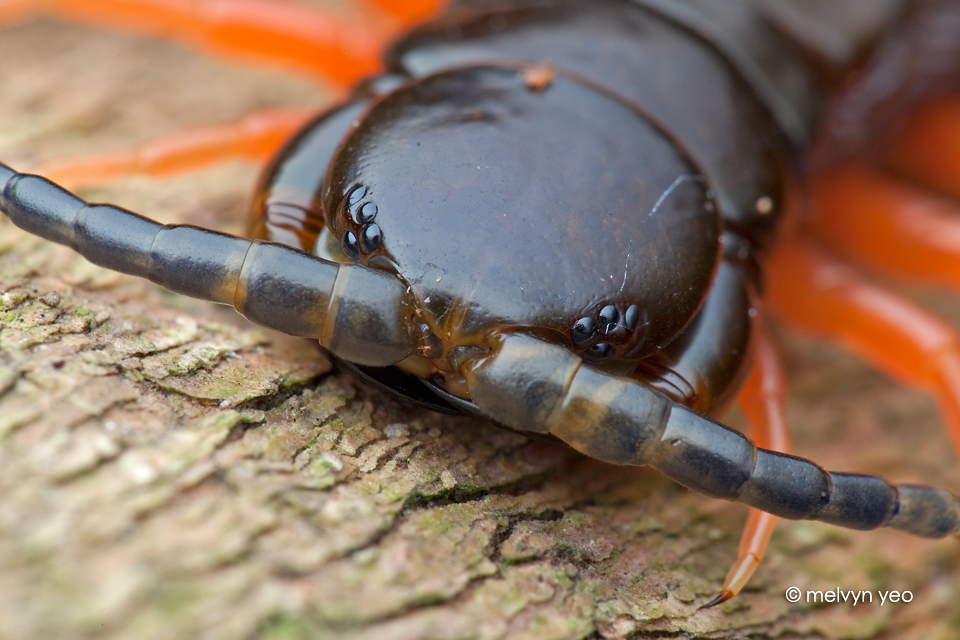ShopDreamUp AI ArtDreamUp
Deviation Actions

Wallpapers
If you love wallpapers in different styles, you are in the right place. We offer wallpapers that you have never seen anywhere before, (mostly for phones). Support my work by contributing to my tip jar. Help me stay motivated to publish more artwork so you can access exclusive artwork! Thank you.
$5/month
Suggested Deviants
Suggested Collections
You Might Like…
Featured in Groups
Description
Closeup of a 7 inch centipede resting on a tree trunk. Taken at night in Singapore.
Quote from en.wikipedia.org/wiki/Centiped…
Centipedes (from Latin prefix centi-, "hundred", and pes, pedere, "foot") are arthropods belonging to the class Chilopoda of the subphylum Myriapoda. They are elongated metameric creatures with one pair of legs per body segment. Despite the name, centipedes can have a varying number of legs from under 20 to over 300. Centipedes have an odd number of pairs of legs, e.g. 15 or 17 pairs of legs (30 or 34 legs).[1][2] Therefore, there is no centipede with exactly 100 legs. A key trait uniting this group is a pair of venom claws or forcipules formed from a modified first appendage. Centipedes are a predominantly carnivorous taxon.[3]:168
Centipedes normally have a drab coloration combining shades of brown and red. Cavernicolous (cave-dwelling) and subterranean species may lack pigmentation and many tropical scolopendromorphs have bright aposematic colours. Size can range from a few millimetres in the smaller lithobiomorphs and geophilomorphs to about 30 cm (12 in) in the largest scolopendromorphs. Centipedes can be found in a wide variety of environments.
Worldwide, there are estimated to be 8,000 species of centipede,[4] of which 3,000 have been described. Centipedes have a wide geographical range, reaching beyond the Arctic Circle.[3] Centipedes are found in an array of terrestrial habitats from tropical rainforests to deserts. Within these habitats, centipedes require a moist micro-habitat because they lack the waxy cuticle of insects and arachnids, and so lose water rapidly through the skin.[5] Accordingly, they are found in soil and leaf litter, under stones and dead wood, and inside logs. Centipedes are among the largest terrestrial invertebrate predators and often contribute significantly to the invertebrate predatory biomass in terrestrial ecosystems.
Quote from en.wikipedia.org/wiki/Centiped…
Centipedes (from Latin prefix centi-, "hundred", and pes, pedere, "foot") are arthropods belonging to the class Chilopoda of the subphylum Myriapoda. They are elongated metameric creatures with one pair of legs per body segment. Despite the name, centipedes can have a varying number of legs from under 20 to over 300. Centipedes have an odd number of pairs of legs, e.g. 15 or 17 pairs of legs (30 or 34 legs).[1][2] Therefore, there is no centipede with exactly 100 legs. A key trait uniting this group is a pair of venom claws or forcipules formed from a modified first appendage. Centipedes are a predominantly carnivorous taxon.[3]:168
Centipedes normally have a drab coloration combining shades of brown and red. Cavernicolous (cave-dwelling) and subterranean species may lack pigmentation and many tropical scolopendromorphs have bright aposematic colours. Size can range from a few millimetres in the smaller lithobiomorphs and geophilomorphs to about 30 cm (12 in) in the largest scolopendromorphs. Centipedes can be found in a wide variety of environments.
Worldwide, there are estimated to be 8,000 species of centipede,[4] of which 3,000 have been described. Centipedes have a wide geographical range, reaching beyond the Arctic Circle.[3] Centipedes are found in an array of terrestrial habitats from tropical rainforests to deserts. Within these habitats, centipedes require a moist micro-habitat because they lack the waxy cuticle of insects and arachnids, and so lose water rapidly through the skin.[5] Accordingly, they are found in soil and leaf litter, under stones and dead wood, and inside logs. Centipedes are among the largest terrestrial invertebrate predators and often contribute significantly to the invertebrate predatory biomass in terrestrial ecosystems.
Image size
960x640px 451.11 KB
Make
Canon
Model
Canon EOS 5D Mark II
Shutter Speed
1/160 second
Aperture
F/16.0
Focal Length
100 mm
ISO Speed
320
Date Taken
Apr 26, 2014, 9:49:21 PM
Sensor Size
6mm
© 2014 - 2024 melvynyeo
Comments149
Join the community to add your comment. Already a deviant? Log In
Choochoo! Chugga chugga chugga! Choochoo!




























